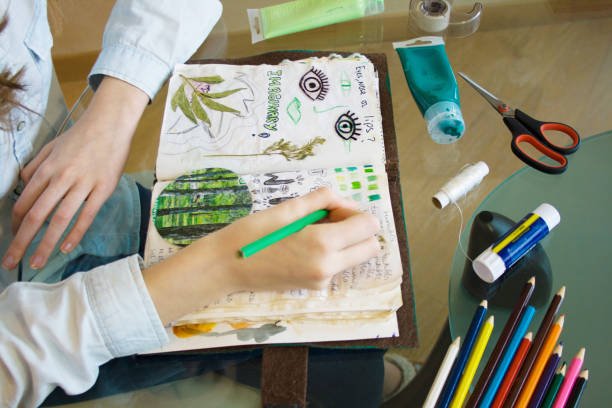Low mood in teenagers is more common than we often realise and yet, it can feel difficult to know how to help. Whether it’s related to school stress, friendships, identity struggles, or simply the intensity of growing up, many teens experience periods of withdrawal, irritability, or emotional numbness.
As a creative arts therapist, I’ve seen how traditional “talk therapy” isn’t always the best fit for teens. Especially when words feel heavy or hard to find. That’s why creative approaches can be so powerful: they offer an outlet, a bridge, and a space for teens to connect with themselves in meaningful ways.
Understanding Low Mood in Teens
First, it helps to recognise what low mood may look like in adolescents. It can show up as:
•Withdrawal from family and friends
•Lack of interest in activities they used to enjoy
•Irritability or sudden mood changes
•Trouble concentrating or sleeping
•Feelings of hopelessness, self-doubt, or overwhelm
These experiences can be difficult for teens to put into words. They might not want to “talk about it,” and attempts to help may be met with silence or frustration. That doesn’t mean they don’t want support, it’s just that they might need it offered in a different form.
Why Creativity Helps
Creative expression bypasses the pressure to explain things logically. Instead, it allows feelings to be externalised onto a page, into music, through movement, or through metaphor. This can be a relief for teens who are tired of being asked, “What’s wrong?” when they don’t have an answer.
In creative therapy, teens don’t have to “perform” or talk in a certain way. They can paint what sadness feels like. Write a poem about invisibility. Create a playlist for days that feel grey. These acts of expression can bring clarity, validation, and even small sparks of hope.
Creative Ways to Support Teens at Home
You don’t need to be a therapist or artist to encourage creative expression. Here are some gentle, teen-friendly ideas you can offer or explore together:
1. Mood Collages
Invite your teen to create a collage using old magazines, printed images, or apps like Pinterest or Canva. The theme could be “how I feel today” or “what I wish people knew about me.” Visual metaphors can help them externalise inner experiences and make sense of complex emotions.
2. Playlist Therapy
Music often speaks when words don’t. Suggest they make playlists for different moods, not just “happy” or “sad,” but also “overwhelmed,” “lost,” or “hopeful.” You might even ask if they’d like to share one with you as a quiet way of saying, “This is how I feel.”
3. Poetry and Journaling Prompts
Writing doesn’t have to be formal or even make sense. Prompts like:
•“Today felt like…”
•“If I were weather, I’d be…”
•“What I wish I could say but don’t…”
can open the door to emotional release.
Offer privacy. Some teens may want to share what they write, others won’t. What matters is giving them a tool to process what’s inside.
4. Art That Isn’t About Being “Good”
Many teens stop making art because they think they’re not “artistic.” Encourage them to use materials without judgment. Paint splats, clay, markers, anything tactile. Let it be messy and expressive. The goal isn’t beauty; it’s expression.
5. Movement as Expression
Not every teen wants to sit still. Offer movement-based options like dance, yoga, or simply walking while listening to music. Movement helps regulate the nervous system and releases built-up emotional energy, even without words.
How Creative Arts Therapy Can Help
Creative arts therapy offers teens a safe space to explore their emotions through metaphor, symbol, and play, even when they can’t name what’s going on. Over time, this non-verbal expression can lead to greater self-awareness, improved coping skills, and a renewed sense of possibility.
In sessions, a teen might create a comic strip of their inner critic, use sand tray storytelling, or sculpt what anxiety feels like. It’s not always direct and that’s often what makes it work. The therapy process honours the young person’s pace, their preferences, and their need for autonomy.
Final Thoughts for Parents & Carers
Supporting a teen with low mood can feel like walking on eggshells. You might want to “fix it,” but often, the most powerful thing you can do is offer steady presence, creative outlets, and a message that says:
“You don’t have to talk if you’re not ready. I’m here anyway.”
When teens are given the tools and trust to express themselves creatively, they often begin to reconnect with parts of themselves they thought were lost. And from that place, healing becomes possible.

